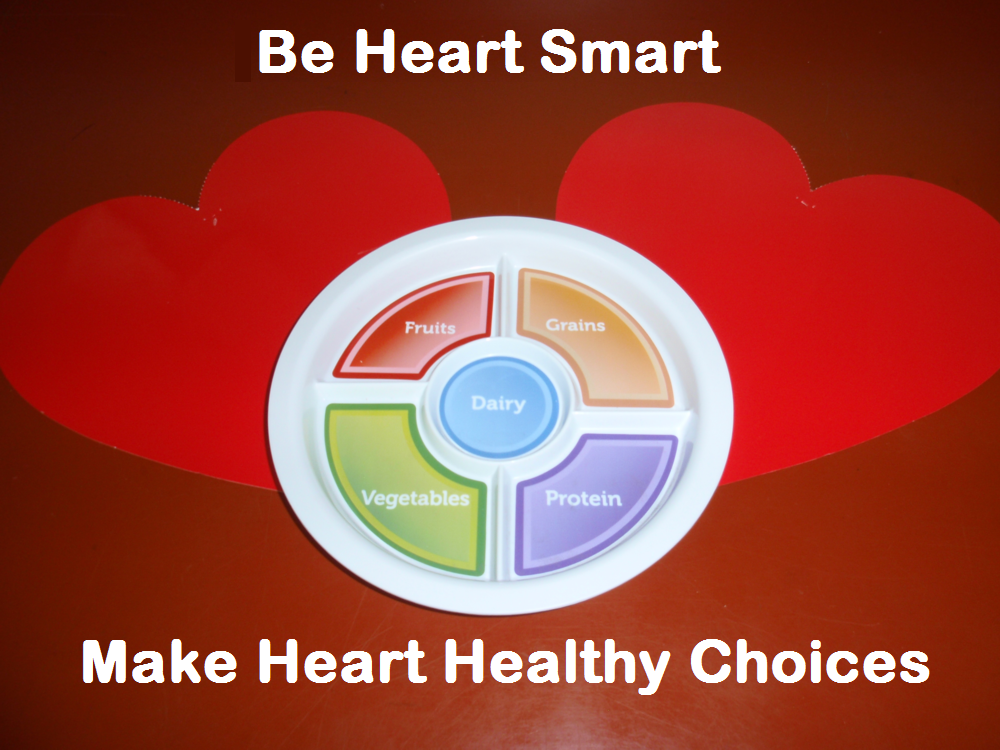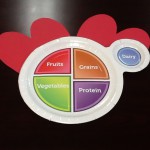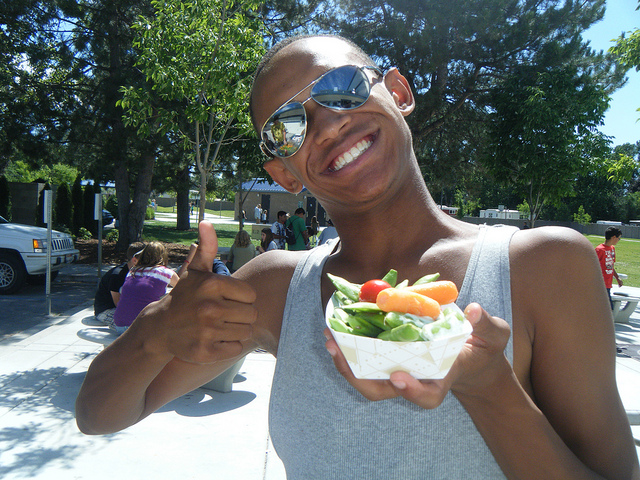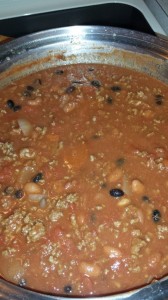by Kristin Jackson | Mar 17, 2014
Your credit score is the most frequently and widely used method for determining your credit worthiness, but what if a 700 credit score was not just a 700 credit anymore? What if there was a way to try to predict consumer debt delinquency behavior even among those individuals that have 700 credit score? Recent research by Xiao and Yao suggests that where you are in your family life cycle could also be another predictor. Xiao and Yao reviewed 15 different life cycle stages

Check your credit report at annualcreditreport.com
and found the following groups were most likely to be delinquent:
- Young couples with children aged seven
- Middle-aged singles with children age 15 or older
- Middle-aged singles with children under 15
- Middle-aged couples with children under 15
- Older couples with financial dependents
What does this mean for the consumers that fall into these groups? It means that financial institutions, bank and credit unions or alternate financial service providers such as payday lenders, cashing services or high interest lenders may profile you for targeted marketing campaigns. What can you do be proactive and avoid negative or sub par offers as a result of being profiled?
- Check your credit report at https://www.annualcreditreport.com/. (It is the only official government authorized free credit reporting site.)
- Before making a major purchase requiring the use of credit, you may want to know your actual score (Often times this is not free).
- Make sure you understand your credit report and/or score. To learn more, contact the Family and Consumer Sciences Agent in your local UF/IFAS Extension Office.
- Research financial institutions or alternate service providers to insure you are getting the best offer base on your score
Don’t be a victim of profiling any longer. Take action now. For more information on credit scoring, contact your Family Consumer Science Agent.
Read the following publications for more information:
References:
Jing Jian Xiao, Rui Yao, (2014) “Consumer debt delinquency by family lifecycle categories”, International Journal of Bank Marketing, Vol. 32 Iss: 1, pp.43 – 59
by Ginny Hinton | Mar 17, 2014

Moderation is the key with both sugar and sugar substitutes.
Do you use sugar, honey, artificial sweetener, or some combination of them all? Which are better to use? The internet is flooded with myths about sweeteners – both nutritive and low- or no-calorie. Because it’s often difficult to sift through the claims, here’s a quick primer on sweeteners:
There are two types of sugar in American diets. Naturally occurring sugars are found in milk and fruit. Added sugars include any sweeteners with calories that are added to foods or beverages during preparation. One of today’s biggest culprits for added sugar is carbonated soda. Because added sugars contribute extra calories with zero nutrients, the American Heart Association recommends that everyone try to limit the amount of added sugars in their diet. One way to do that is by using artificial sweeteners.
Artificial or non-nutritive sweeteners are often used for weight control or diabetes management. Because they aren’t carbohydrates, these sweeteners don’t raise blood sugar levels. Approved non-nutritive sweeteners have to pass rigorous government safety assessments before being accepted for sale. They can be safely consumed by the general public and do not cause or increase the risk of cancer or other health conditions. They may help with weight management when used as part of a sensible meal plan. Many rigorous studies support the safety of various non-nutritive sweeteners, including over 200 studies on aspartame alone.
High fructose corn syrup is a sweetener made from corn starch. It has the same calories per tablespoon and very similar effects on blood levels as sugar. Honey is a caloric, or nutritive, sweetener that is often promoted as a healthier option than table sugar or sugar substitutes. Its vitamin and mineral content is actually very similar to sugar and both sugar and honey end up in the body as glucose and fructose.
The bottom line is that moderation is the key with both sugar and sugar substitutes. It’s important with sweeteners to look beyond the hype. In the end any processed foods, with or without sugar substitutes, generally don’t offer the same health benefits you get from foods like fruits and vegetables.
References:
Mayo Clinic Staff, Artificial Sweeteners and Other Sugar Substitutes (October 9, 2012). http://www.mayoclinic.com/health/artificial-sweeteners?MY00073
Junod, Suzanne W., Sugar: A Cautionary Tale (May 21,2009). http://www.fda.gov.
CFSAN/Office of Food Additive Safety, FDA Statement on European Aspartame Study (April 20, 2007). http://www.fda.gov
International Food Information Council Foundation, Facts About Low-Calorie Sweeteners, (August 2012). www.foodinsight.org.
American Diabetes Association, Artificial Sweeteners (February 16, 2011). www.diabetes.org/food-and-fitness/
Food and Drug Administration, High Fructose Corn Syrup: Questions and Answers (April 17, 2013). http://www.fda.gov
Hirsch, Larissa, Are Artificial Sweeteners OK to Consume During Pregnancy? (August 2009). http://kidshealth.org
Low Calorie Sweeteners Webinar powerpoint (2011). https://connect.extension.iastate.edu/fffcop?launcher=false.
American Heart Organization, Non-Nutritive Sweeteners (Artificial Sweeteners) (December 13, 2012). http://www.heart.org?HEARTORG

by Dorothy C. Lee | Mar 3, 2014

Be Heart Smart – Make Heart-Healthy Choices
The Centers for Disease Control and Prevention estimate that about 600,000 people die of heart disease in the United States each year. Heart disease is the leading cause of death for both men and women in the United States.
Eating habits are something we acquire as we grow up. Over the years, family eating habits have changed drastically. There is less emphasis given to well-planned family meals. American food habits are leaning more toward meals eaten away from home, and more reliance on fast food, convenience foods, and high-sugar, high-salt snacks.
The food choices we make today are important to our nutritional well-being tomorrow. A diet low in saturated fat and cholesterol and high in fruits and vegetables and grain products that contain some type of dietary fiber may reduce the risk of heart disease.
Be Heart Smart. Make heart-healthy choices at every meal. Basic steps to a heart smart diet are simple and easy:
- Select whole grains and cereals
- Eat a wide variety of fruits and vegetables
- Limit sodium intake
- Use oil products made from unsaturated vegetable oils instead of saturated oils like coconut and palm kernel
- Select cooking methods that are lower-fat alternatives to frying, such as grilling, baking, broiling, or microwaving
- Choose lean meat, poultry, and fish
Your health is your most precious possession. A healthy diet is only one part of a heart-healthy lifestyle. Physical activity is another important component. The American Heart Association physical activity guidelines recommend some type of aerobic exercise daily, and walking, dancing, biking, swimming, or gardening are good examples. Be sure to consult your physician before starting any exercise program.
We are all concerned about maintaining good health. Developing good eating habits based on moderation and variety, plus physical activity, can help keep, and even improve, your health.
For more information, visit the University of Florida Solutions for Your Life website, http://www.SolutionsForYourLife.com.
Reference: http://www.heart.org

by Angela Hinkle | Mar 2, 2014

Enjoy the taste of eating right.
Taste tops nutrition as the main reason why we buy one food over another, as consumer research has clearly shown. Even though social, emotional, and health factors do have important roles to play, the foods people enjoy are probably the ones they eat the most. The key message for National Nutrition Month® – March 2014 focuses on encouraging personalized healthy eating styles – showing how we can combine taste and nutrition to make healthy meals.
This year, the Academy of Nutrition and Dietetics encourages everyone to “Enjoy the Taste of Eating Right”. Because taste is the major influencer of what we eat, it’s important to balance choosing the foods we like with those that provide the nutrients we need.
When it comes to choosing what to eat, nutrition is important, but flavor is the true motivator and the key to eating right. We have over 10,000 taste buds, so we should use them to discover a world of tasty nutritious foods.
- Try one new fruit, vegetable, or whole grain each week.
- When eating out, try ethnic foods from Asia, Europe, or Africa because they often have many healthy options.
- When cooking at home, try a new twist on old favorites. Grill vegetables and fish, make kabobs, bake the potatoes instead of mashing them, and use that spice rack to add zest.
- If you’re sticking with the tried and true foods you know you like, be sure to read the nutrition labels to help you develop a plan for healthy eating that emphasizes a balance of foods.
Return to the basics of healthful eating starting this month. Enjoy the Taste of Eating Right: eat right, your way, every day.
Learn more about how you can enjoy the taste of eating right by visiting www.eatright.org and by contacting your local UF/IFAS Extension Office.

by Angela Hinkle | Feb 28, 2014

Family Eats Sofa
No, not the kind you sit on. SoFAS stands for “Solid Fats and Added Sugars”. Even though the Dietary Guidelines for Americans recommends no more than about 15% of daily calories should come from SoFAS, Americans of both sexes and all ages get closer to 35% of their daily calories from SoFAS – nearly 800 calories a day. This isn’t a big surprise when considering the top food sources of SoFAS: pies, cakes, cookies, donuts; fruit, energy, and sports drinks; pizza; ice cream; and sausages, hot dogs, bacon, and ribs. Each of these foods adds about 100-150 calories on average to the daily American diet.
Solid Fats are saturated or trans-fats that are solid at room temperature. Added sugars are in foods that have sugar added to them during processing or preparation. SoFAS also are known as “empty calories.” Many people eat those empty calories in place of nutrient-rich foods their bodies need. SoFAS provide little or no nutritional value and they can have serious implications on health, including heart disease, weight gain, and tooth decay.
Nutrient dense foods provide key nutrients for the calories consumed. These nutrients build, repair, and maintain body tissues, regulate body processes, and give the body fuel for an active lifestyle. Nutrient-rich food choices fill you up so there is little room left for the empty calories from SoFAS that offer few nutrients the body can use. Pick foods rich in vitamins, minerals, dietary fiber, lean protein, and healthy fats from all the food groups before eating foods with SoFAS.
To see how many empty calories are in some favorite foods, check out How Do I Count Empty Calories? You can calculate your exact calorie needs on the ChooseMyPlate Super Tracker site. Don’t want to count calories but want to be sure not to eat too many empty calories? Read the Nutrition Facts Label on food packages and choose foods that are lower in fat and have less total sugar.
Eat a variety of healthy foods from each MyPlate food group every day. And get off the SoFAS – avoid the solid fats and added sugars.
For more information about SoFAS, contact your local UF/IFAS Extension Office.
by Kendra Hughson | Jan 8, 2014

Soup is a great way to pack your diet with vegetables.
Nothing tastes as good on a cold, winter day as a nice hot bowl of soup. Soups are easy to make and economical. Homemade soups are healthy. They are a great way to pack more vegetables into your diet. You can control the amount of sodium by making your own broth or white sauce or by choosing canned broth and vegetables low in sodium. Use herbs and spices for flavor instead of salt. Be creative – there are endless possible combinations of ingredients that will make a delicious soup.
Soup is easy to freeze for later use: freeze your soup in zipper style freezer bags. You can use the large bags to freeze a family size portion of soup or you can use small bags to make handy individual servings of soup. Freeze bags of soup on a plate to prevent the bags from freezing around the rack making it difficult to remove later. Run the bag under cold water until thawed enough to slip into a bowl or pot for further heating on the stove or in the microwave. You can also freeze soup in plastic or glass food grade, freezer safe containers. Be sure to leave about a half-inch of space at the top to give the soup room to expand when it freezes. Thaw in the refrigerator or run the bottom of the container under cold water until you can pop it out and place in another bowl or pot for further heating.
Here are a few common types of soup for inspiration:
Chili – the origins of chili con carne, or chili with meat, are a little mysterious and highly debated. San Antonio made this spicy dish popular more than 100 years ago. Chili consists of thick meat (pork, chicken, beef, or wild game) and/or cooked dried beans in many variations. Chili with only beans is known as chili con frijoles.
Chowder is a seafood or vegetable stew originating from New England. A New England chowder is recognized by a creamy milk base, whereas a Manhattan chowder boasts a flavorful and less fattening tomato base.
Creams and Purees consist of milk, cream, broth, and/or vegetable purees. Puree vegetables using a food processor, blender, immersion blender, or food mill. Reduce the amount of fat and calories in cream based soups by choosing lower fat alternatives like 2% milk or by using pureed white beans to thicken the soup.
Gumbo originated in southern Louisiana in the 18th century. Highly seasoned and spicy, this stew like dish blends a variety of cultures including French, Spanish, Choctaw, and West African. Gumbo is thickened with okra, file´ powder(dried and ground sassafras leaves, pronounced fee-lay), or roux (a French base made of oil and flour).
Brunswick Stew
1 tablespoon vegetable oil
1 medium chopped onion
1/2 cup chopped pepper – red, green, or a combination (optional)
2 cups chicken broth, low sodium
1/2 teaspoon dried leaf thyme
1/4 teaspoon black pepper
2 cups cooked, diced, and boned chicken or turkey
2 cups tomatoes, canned or cooked
2 cups cooked dry beans OR 1 (15.5 ounce) can beans (drained), such as red beans or Great Northern beans, etc.
2 cups whole kernel corn, frozen or 1 (15.5 ounce) can corn, canned without salt (drained)
Directions:
- Heat oil in a large pan. Add onion and cook in oil until tender.
- Add all remaining ingredients, except salt and pepper. Bring to a simmer and cook, covered, for 30 minutes on medium-low heat.
- Season to taste with salt, if desired.
Recipe Source: Adapted from Virginia Cooperative Extension
For more information on soups, contact UF IFAS Extension Leon County at 850-606-5200 or hughson@ufl.edu.









